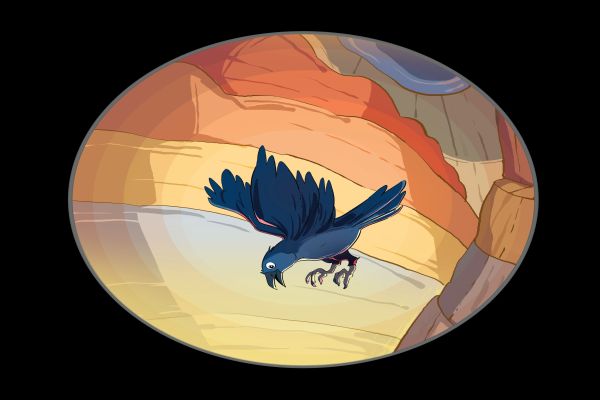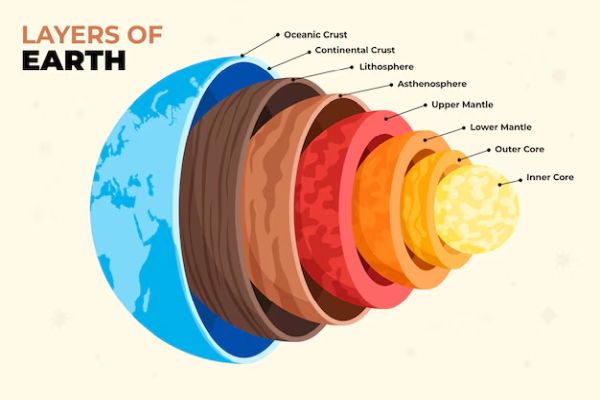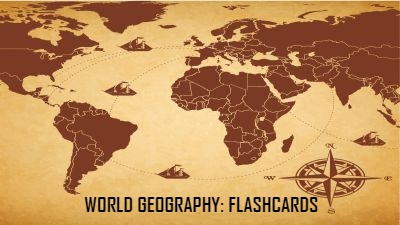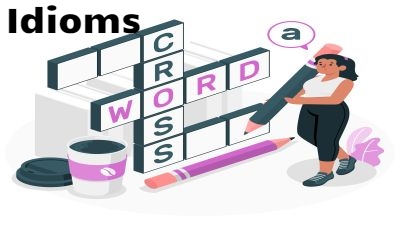After learning about Sir C.V. Raman, Kakabhushundi used the portal to time travel to Ayodhya when Rama was a child. His favourite pastime was to swoop in and grab some food that Rama had spilt. Seeing this, Rama would try to catch him but Kakabhushundi would always escape.
Kakabhushundi: He is the god I worship, no matter which universe or timeline I go to. Yet, he struggles to catch me. I wonder why.
Kakabhushundi flew off to see Sage Lomasa and clear his doubt.
Kakabhushundi: You know about the game I play with Rama. I feel bad seeing his sad face when he cannot catch me.

Illustration: Sahil Upalekar
Sage Lomasa (smiles): He may be a god but Rama is a human incarnation. It is part of a child’s play. I don’t know what he will do to you if you stop escaping.
Kakabhushundi: But I want to surrender and not escape. I want to see him smile.
Sage Lomasa: Go ahead and see what happens. I am sure Rama will show you something you have never seen. The new version of your play should be interesting.
Kakabhushundi went back to Ayodhya, where Rama was eating malpuas. This time, when Rama tried to catch him, Kakabhushundi didn’t fly away. When Rama caught him, he put the crow into his mouth. A shocked Kakabhushundi travelled down Rama’s throat and caught a glimpse of something wondrous. Just then, he felt himself being pulled upwards and was given another vision. Kausalya, who had pulled him out, threw him out of the window. Kakabhushundi saw Rama smiling, as he flew away to Sage Lomasa’s hermitage.
Sage Lomasa: So, within a few seconds, you were swallowed and saved.
Kakabhushundi: A few seconds? It felt like a few hours.
Sage Lomasa: That means you travelled like a photon of light. The faster you travel, everything around you will look frozen in time.
Kakabhushundi: Exactly. But, in the darkness, I saw various layers of the Earth: below and above. Can you explain this to me?

Sage Lomasa: Let’s first look at the layers of the Earth: Crust, Mantle, Lithosphere, Asthenosphere, Mesosphere, Outer Core, Inner Core. The Crust is the outermost layer varying in thickness from 5km to 70km. This is where humans live.
Next comes the Mantle, which lies at a depth of almost 3000km. The upper part of the Mantle and the Crust together form the Lithosphere, which is divided into tectonic plates. Just below this is the Asthenosphere. This is a denser and weaker layer, which lies between 100 km and 410 km below the Earth’s surface. Here, the temperature and internal pressure is so high that the rocks begin to melt and are in a semi-molten form. The mesosphere, which comes next, is found at a depth of between 410 km and 660km. The extreme temperature and pressure in this zone causes minerals to change forms. So the Asthenosphere and the Mesosphere lie between the Crust and the Mantle.
After the Mantle comes the Outer Core, which begins at a depth of 2,890 km and goes on until 5,150km. The temperature ranges from 4,400-5,000°C and metals like iron and nickel are found in liquid form. This layer creates the magnetic field and protects the Earth from the Sun’s solar winds. Finally we come to the Inner Core, which is almost as hot as the Sun’s surface at above 5,000°C. But the pressure is so high that it is completely solid.
Kakabhushundi: But I also saw other layers above the Earth. What are those?

Sage Lomasa: Those are atmospheric layers: Thermosphere, Stratosphere, Mesosphere, Thermosphere, and Exosphere. The first begins from the Earth’s surface and it holds all the air required for life forms. Here, the temperature decreases as you go higher. This is where weather patterns are formed. Later, when humans invent flying machines, they will also fly in this layer.
Next comes the Stratosphere, which houses the ozone layer that protects the Earth from ultraviolet radiation. So the higher you go in the stratosphere, the temperature becomes warmer because of the radiation. The third layer is the Mesosphere.
Kakabhushundi: Didn’t you mention Mesosphere under the Earth as well?
Sage Lomasa: Yes, that is different from the atmospheric Mesosphere. Here, the higher you go, the colder it gets. The topmost part has an average temperature of minus 85°Celsius. This is also the area where meteors are burnt up as they enter the atmosphere. Next comes the Thermosphere. The bottom part is called the ionosphere. With the atoms and molecules here being ionised due to ultraviolet and solar radiation, it reflects and modifies radio waves. This will play an important role in the future as the humans will use it for communication and navigation. At the top lies the Exosphere. Particles from here escape into space. When humans begin to send up satellites, those will orbit in this layer.
Kakabhushundi: May be I should have continued my journey inside Rama.
Sage Lomasa: Actually, the human body could be a reflection of the universe itself. I will explain all this later.
The author is the founder and CEO of Vaayusastra Aerospace, an IIT-Madras incubated ed-tech startup that offers Air Science workshops for children between five and 14 years.
Now that you have read all about the layers above and below the Earth, here is an activity for you. Arrange the layers of the Earth and the atmosphere in the correct order by dragging and dropping the images in the correct position.









